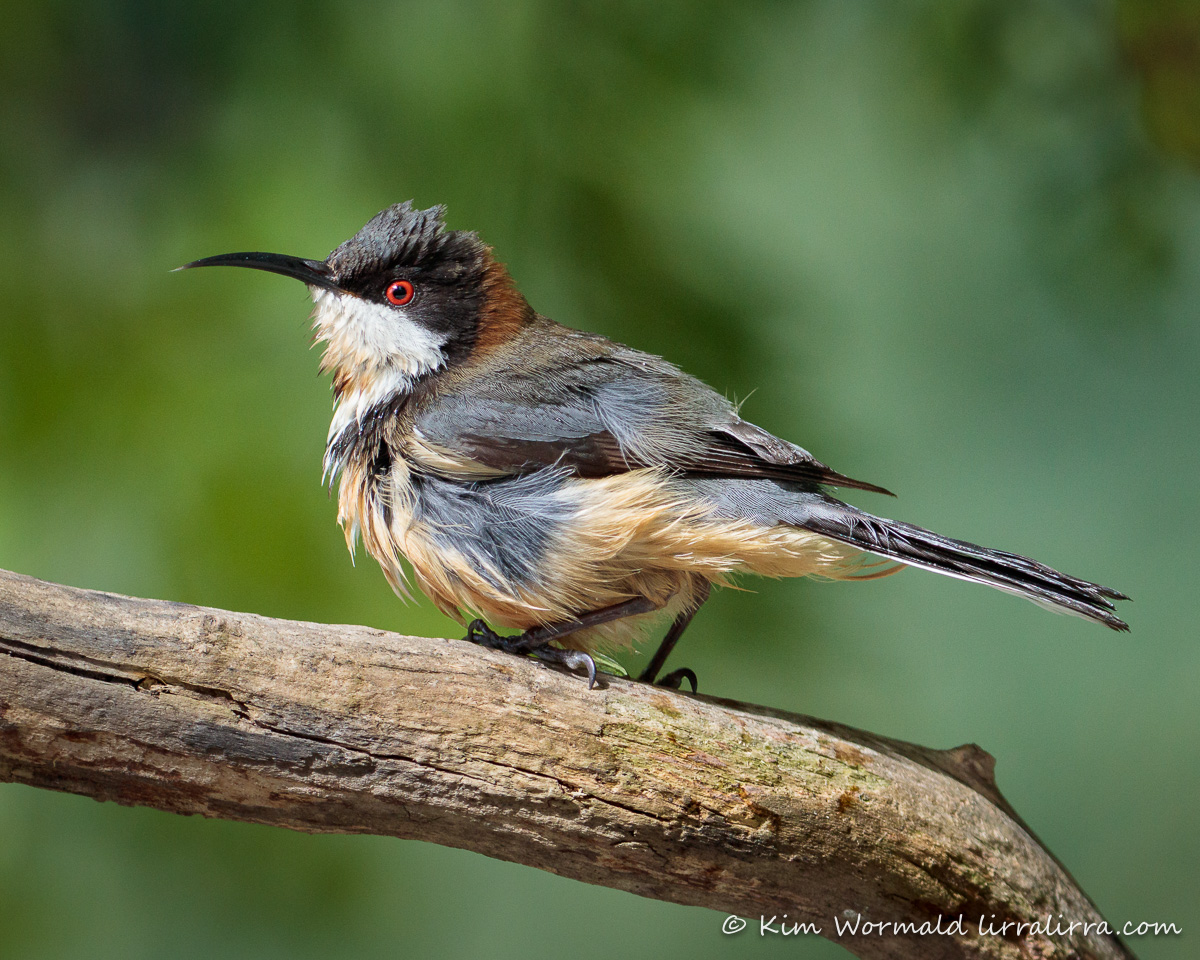Has anyone else noticed Eastern Spinebills visiting gardens or bushlands more often in recent years?

Eastern Spinebill (Acanthorhynchus tenuirostris)
1/1600, f5.6, ISO 1000
Eastern Spinebills are exquisite little honeyeaters that have extended their time in my garden and have been here permanently for a few years now. During the same period I have ‘lost’ many other species, including Scarlet and Flame Robins that used to be here every winter but this is the fourth year without them.
Eastern Spinebills feed on nectar and insects, I’ve been lucky enough to watch them catch bees. Their long, de-curved bills are ideal for taking nectar from tubular flowers which they do when perching or hovering – they are the closest Australia has to hummingbirds though at 16cm and 11g they are considerably larger than most hummingbird species.
The spinebill’s stunning colours can be seen in the image above. Males are more strongly coloured while females are slightly softer with a greyish crown. The grey underparts of the species aren’t usually visible but this bird’s feathers are wet and hanging at an unusual angle. If you look closely you can just see the tip of its brush-tipped tongue.
I enjoyed giving my presentation for the Australian Photographic Judges Association at the weekend. My talk focussed on judging nature and wildlife images, which can be a complex task as the rules are complicated and strict. One rule relates to ensuring that ‘all allowed adjustments must appear natural’ to ensure the ‘honest presentation’ of the subject. I mentioned during the presentation that there is one bird whose eyes don’t always look realistic and I’ve often wondered if judges think the colour has been manipulated – but Eastern Spinebills really do have remarkably red eyes.
Happy birding
Kim
~ thank you for visiting and commenting
~ use the subscribe box if you’d like to receive a weekly email when lirralirra is updated

I’ve been noticing them in my garden for the first time, just in the last two years. I do have varieties of salvias that flower alternately, so there are always nectar attracting plants. It was their song I noticed first, then the quick movements and lastly the gorgeous colours and exquisite beak. I always feel light in my heart when they visit.
Oh Ruth I totally understand the ‘lightness of heart’ feeling. It’s great to hear that spinebills are enjoying your garden and bringing you so much pleasure, thank you for sharing, Kim
I meant to say I’m in the inner north of Melbourne, juSt in terms of shifting bird populations. I’m enjoying your page by the way, thanks for the great photos and observations, nice to feel part of a community of people who love birds
I was wondering where you are, it’s extra special that the spinebills are visiting the inner north. Thank you for your kind comments
Yes I’ve had a pair of eastern spinebills living for more than a year in my neighbourhood often visiting my garden. Ionly saw one year before last visit for a week and never previously. I live in the inner southeast Melbourne so I’m amazed (never get their bills or red robins this close to town!)
Beautiful photo and story.
That’s really interesting Pascale and supports the feedback I received by email and on fb. I’m wondering whether it has something to do with more nectar bearing plants being used in gardens. I hope they keep visiting and that some robins join them.
Great shot as always!
Thank you Stephen
Dainty and delightful.
I am sure your presentation was well received. Your enjoyment in giving it would show – and add immeasurably to the presentation.
It is sad to see some birds disappear from our gardens, and can be equally sad to see others appear. From time to time we see yellow tailed black cockatoos – always a sign that conditions are rough in their home territory.
The YTBC are often here in spring when there are cones on a neighbour’s pine tree that is next to our fence. Once I saw a huge flock of 77 but usually it’s much smaller family groups. They are incredibly beautiful birds. I especially love their hauntingly magical calls.
A really beautiful photo again Kim. You are a master and I just marvel at your photos. Wonderful!
What a lovely, kind comment Neil. Thank you. Did I see one of your lovely shots at the KPS Interclub?